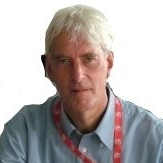Thermally Driven Systems
A special issue of Energies (ISSN 1996-1073).
Deadline for manuscript submissions: closed (15 October 2016) | Viewed by 13575
Special Issue Editor
Interests: thermal power systems; refrigeration; combined cycles; internal combustion engines; finite time thermodynamics
Special Issues, Collections and Topics in MDPI journals
Special Issue Information
Dear Colleagues,
Decarbonising the energy economy has been a goal of governments for several decades, from all regions of the world. The recent Climate Change Summit in Paris set a target of reducing greenhouse gas emissions and limiting the global temperature rise to 1.5 degrees. This must be achieved, however, without impacting adversely on economic growth and wellbeing.
This Special Issue of Energies is focused on highlighting research activities directed to reducing carbon emissions and promoting energy efficiency through the use of alternative energy sources, energy recovery and novel thermodynamic cycles. Of particular interest will be articles based on heat driven refrigeration and power generation systems associated with heat storage and energy recovery, co-generation - tri-generation cycles and new and renewable energy. Conventional analysis of such cycles will be welcome as will optimization studies based upon exergy and finite time. These thermal systems would find application in locations requiring a power mix of electricity, heating and cooling, such as retail outlets, airports, offices, and residential buildings.
Prof. Dr. Brian Agnew
Guest Editor
Manuscript Submission Information
Manuscripts should be submitted online at www.mdpi.com by registering and logging in to this website. Once you are registered, click here to go to the submission form. Manuscripts can be submitted until the deadline. All submissions that pass pre-check are peer-reviewed. Accepted papers will be published continuously in the journal (as soon as accepted) and will be listed together on the special issue website. Research articles, review articles as well as short communications are invited. For planned papers, a title and short abstract (about 100 words) can be sent to the Editorial Office for announcement on this website.
Submitted manuscripts should not have been published previously, nor be under consideration for publication elsewhere (except conference proceedings papers). All manuscripts are thoroughly refereed through a single-blind peer-review process. A guide for authors and other relevant information for submission of manuscripts is available on the Instructions for Authors page. Energies is an international peer-reviewed open access semimonthly journal published by MDPI.
Please visit the Instructions for Authors page before submitting a manuscript. The Article Processing Charge (APC) for publication in this open access journal is 2600 CHF (Swiss Francs). Submitted papers should be well formatted and use good English. Authors may use MDPI's English editing service prior to publication or during author revisions.
Keywords
- co-generation
- refrigeration
- energy storage
- organic Rankine cycles
- energy recovery
- waste heat
- solar energy





